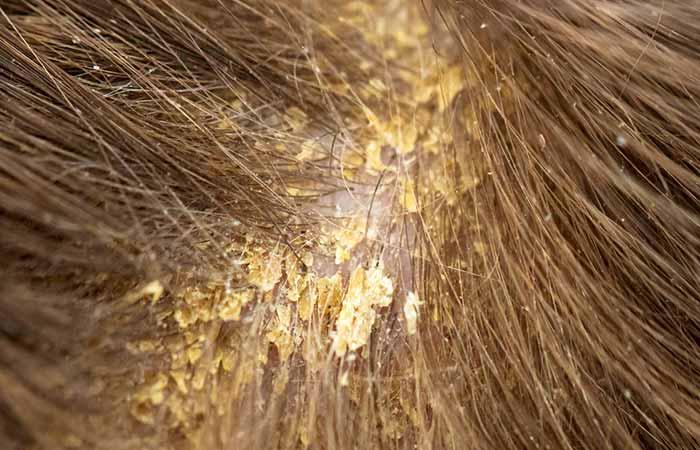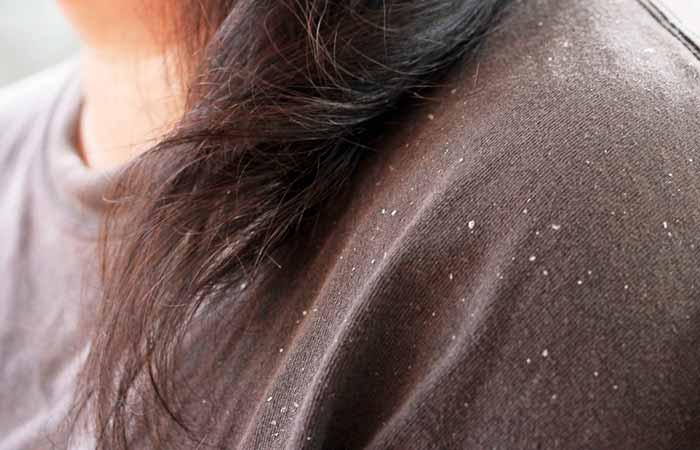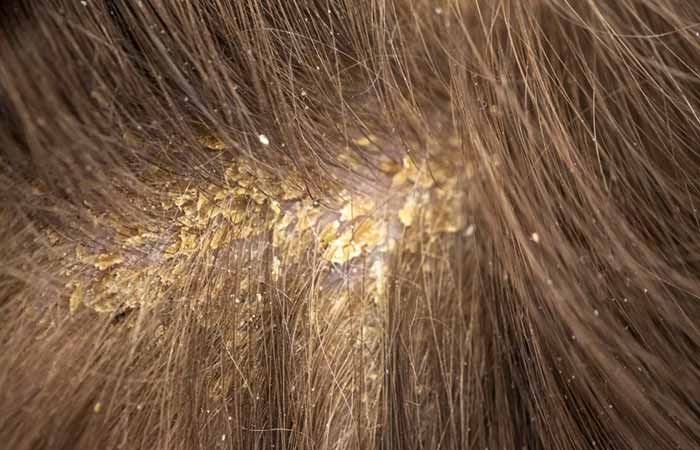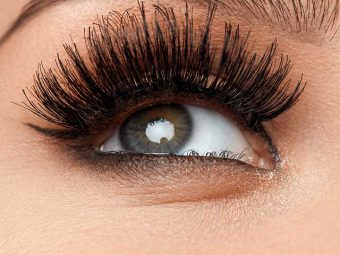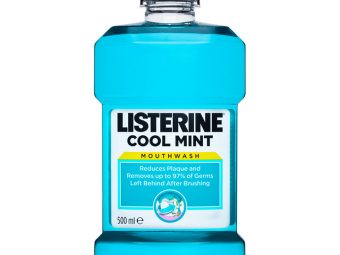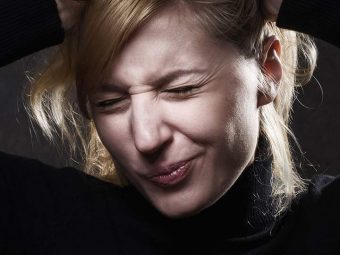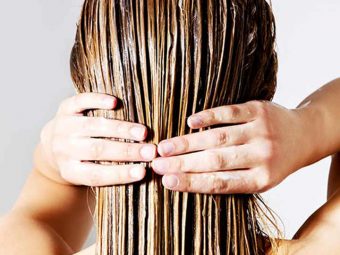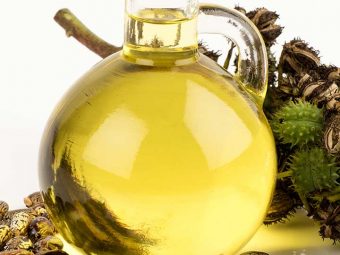Wet Dandruff – What Is It And How To Treat It?
Natural remedies that can help rid your scalp of the stubborn, greasy, sticky layer of dead cells.

If you have not heard of wet dandruff, it is a type of dandruff caused by the natural oil on your scalp. Dry dandruff is usually milder than wet dandruff. This type of dandruff affects most people with oily scalps, and the flakes stick to the hair strands and are larger than the flakes you see in dry dandruff. However, the right dandruff treatment solutions can help you eliminate those itchy flakes. Here, we have discussed what causes wet dandruff, how to get rid of it, and much more. Scroll down.
In This Article
What Is Wet Dandruff?
Located underneath your scalp are sebaceous glands that serve the primary function of producing the natural oil sebum. This sebum keeps your hair and scalp moisturized and prevents them from getting dehydrated. It also serves the purpose of reducing frizz and preventing the signs of aging from appearing.
The problem begins when the sebaceous glands start working in overdrive and producing sebum in excess quantities. The excess sebum starts building up on your scalp and makes it sticky. It starts attracting and clinging onto dirt and dead skin cells, thus forming dandruff (1). Since sebum is moist it forms a damp layer on your scalp. This type of dandruff is referred to as wet dandruff or oily dandruff.
What Are The Causes Of Wet Dandruff?
I know what you’re wondering – why do your sebaceous glands suddenly start acting crazy and producing extra sebum? Well, the most common causes are hormonal changes caused by puberty or stress (1). Another major reason could be irregular and infrequent shampooing habits that lead to insufficient cleansing of your scalp and the subsequent buildup of dirt and dead skin cells causing wet scalp.
How Does Wet Dandruff Occur On Eyebrows And Eyelashes?
Sebaceous glands are located all over your body. The only other areas that have a thick concentration of hair besides your scalp and are exposed to the environment are your eyebrows and eyelashes. Henceforth, the sebaceous glands in those areas can also overproduce sebum and cause wet dandruff (1).
Dry Dandruff v/s Wet Dandruff
Dry dandruff typically consists of small, white flakes that fall off your scalp pretty easily with the slightest movement. Wet dandruff, on the contrary, appears as large, yellow, sticky dandruff flakes that clump together and cling onto your hair shafts. They do not fall off easily. Usually, the scalp feels wet after scratching.
Dry dandruff does not cause redness or irritation on the scalp and tends to disappear during the summer months. But Wet dandruff is more of a long-lasting condition and causes severe itching and inflammation on the scalp. This type of dandruff causes a wet feeling on the head.
Since wet dandruff is a more long-lasting condition and causes extreme itching, you need to treat it with natural remedies that specifically target these problems. Here are a few things that you can try out…
How To Get Dandruff Out Of Wet Hair
1. Aloe Vera Gel
Aloe vera contains cleansing enzymes like oxidase, amylase, and catalase and vitamins B, C, and E. It also contains glycoproteins that reduce inflammation and soothe itchiness (2). Therefore, it may help in getting rid of the dead skin cells, oil buildup, and fatty deposits clogging your hair follicles and causing wet dandruff.
What You Need
- 3-4 tablespoons aloe vera gel
- Towel
- Hot water
What To Do
- Apply the aloe vera gel all over your scalp.
- Soak the towel in hot water and wring out the excess water.
- Wrap this hot, damp towel around your head and leave it on for half an hour.
- Wash off the aloe vera gel with a mild shampoo.
- Follow this routine thrice a week.
2. Apple Cider Vinegar
Apple cider vinegar acts as an excellent wet dandruff remedy (3). This could be because the acidic nature of apple cider vinegar alters the pH of your scalp, making it difficult for the dandruff-causing fungus to grow.
What You Need
- ½ cup apple cider vinegar
What To Do
- Pour the apple cider vinegar all over your scalp and gently massage it in.
- Leave it on for 10 minutes.
- Wash it off with a mild shampoo and condition your hair as normal.
- Follow this routine once a week.
3. Lemon Juice And Amla Juice
Lemon juice and amla juice work in sync to removethe wet dandruff and accumulated oil on your scalp. Additionally, the citric acid content of the lemon juice acts as an antimicrobial agent and helps get rid of the fungus causing the wet dandruff (3).
What You Need
- 2 tablespoons lemon juice
- 2 tablespoons amla juice
- Cotton ball
What To Do
- Combine the juices in a bowl.
- Use a cotton ball to apply this mixture all over your scalp.
- Leave it on for 30 minutes before washing it off with a mild shampoo.
- Follow this routine twice a week.
4. Baking Soda
Baking soda may sound like an odd choice for treating wet dandruff, but it could actually work well in this aspect. A study conducted in France found that baking soda can kill the dandruff-causing fungus (4).
What You Need
- 3 tablespoons baking soda
- Water
What To Do
- Mix some water with the baking soda.
- Apply this paste all over your scalp and leave it on for 10 minutes.
- Wash it off with water and a mild shampoo.
- Follow this routine once a week.
5. Fenugreek Seeds
Fenugreek seeds possess antibacterial and antifungal properties that fight off the infections that could be causing and aggravating the wet dandruff condition (3).
What You Need
- 2 tablespoons fenugreek seeds
What To Do
- Soak the fenugreek seeds in water overnight.
- Grind them into a smooth paste the next morning.
- Apply this paste all over your scalp and leave it on for 30 minutes.
- Wash it off with a mild shampoo.
- Follow this routine twice a week.
Wet dandruff occurs in people with oily scalp. When the sebaceous glands produce excess sebum, your scalp becomes sticky and attracts dirt and dead skin cells, resulting in dandruff. The two main reasons for the oily scalp are hormonal changes and irregular hair washing. These two can lead to wet dandruff issues. However, you can treat it through the methods discussed above. Following the remedies in this article may help you treat wet dandruff and cleanse your scalp. Consult your doctor if these do not work.
Frequently Asked Questions
What does it mean if you have yellow dandruff?
If you have yellow dandruff, it means that you have excess sebum production on your hair.
Is dandruff caused by puberty?
The hormonal changes that occur during puberty can cause dandruff.
Why do I have scabs on my head?
The scabs on your head could be a result of the excessive itching and scratching that accompany wet dandruff.
Sources
- Ethnopharmacological Survey Of Home Remedies Used For Treatment Of Hair And Scalp And Their Methods Of Preparation In The West Bank-Palestine, BMC Complementary and Alternative Medicine, US National Library Of Medicine.
https://www.ncbi.nlm.nih.gov/pmc/articles/PMC5499037/ - Development Of Alcoholic And Malolactic Fermentations In Highly Acidic And Phenolic Apple Musts, Bioresource Technology, US National Library Of Medicine.
https://www.ncbi.nlm.nih.gov/pubmed/17706419 - Antimicrobial Activity Of Apple Cider Vinegar Against Escherichia Coli, Staphylococcus Aureus And Candida Albicans; Downregulating Cytokine And Microbial Protein Expression, Scientific Reports, US National Library Of Medicine.
https://www.ncbi.nlm.nih.gov/pmc/articles/PMC5788933/ - Authenticating Apple Cider Vinegar’s Home Remedy Claims: Antibacterial, Antifungal, Antiviral Properties And Cytotoxicity Aspect, Natural Product Research, US National Library Of Medicine.
https://www.ncbi.nlm.nih.gov/pubmed/29224370



